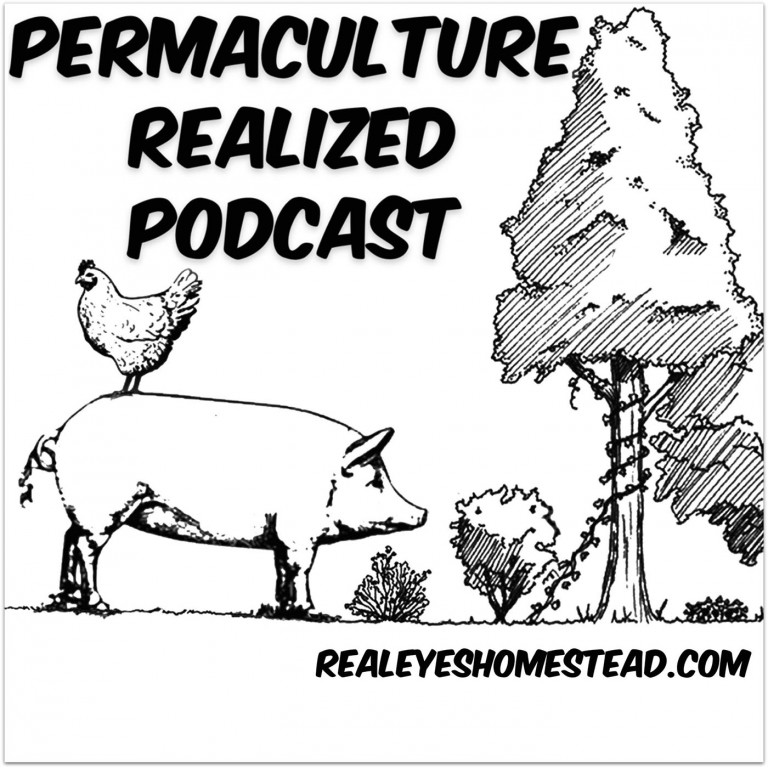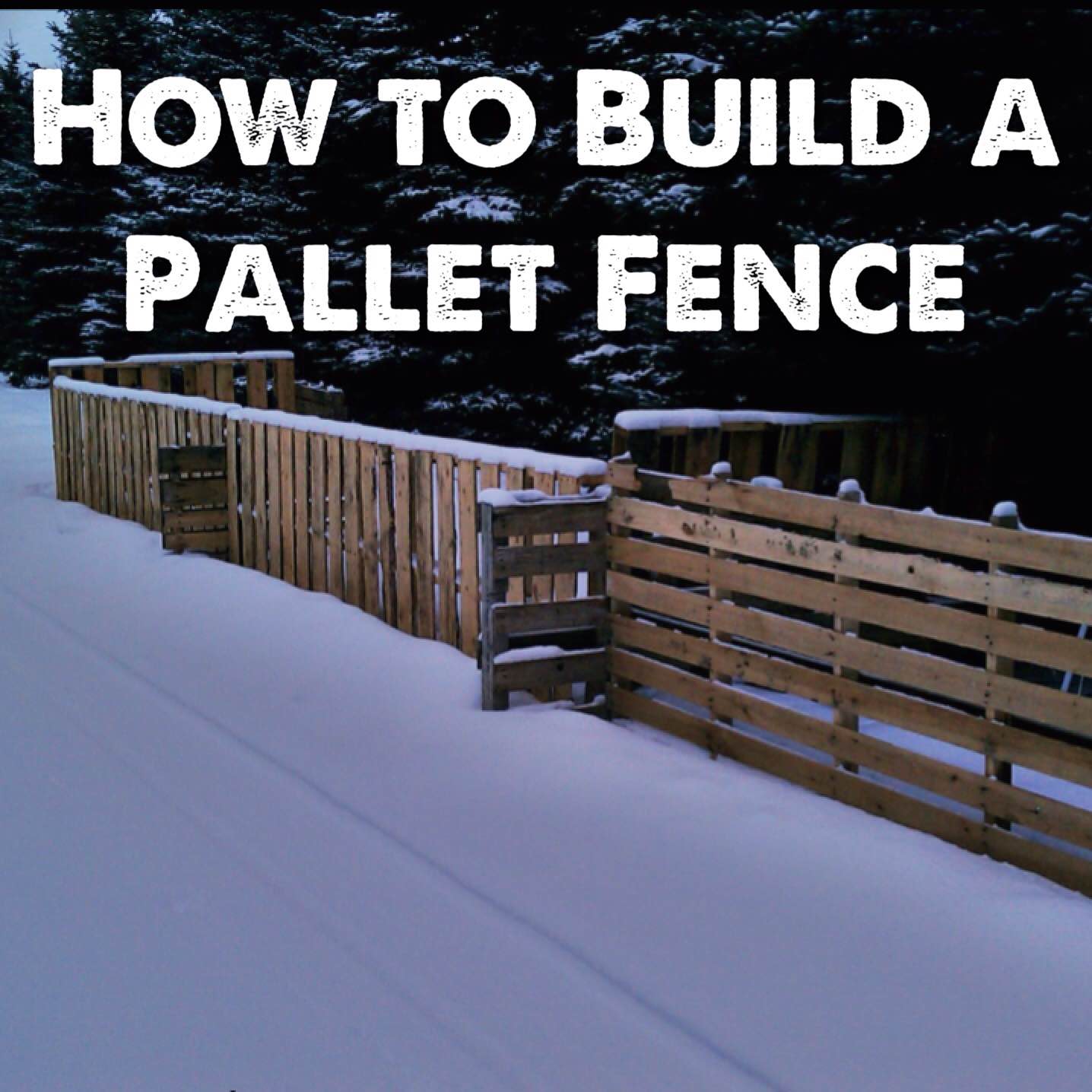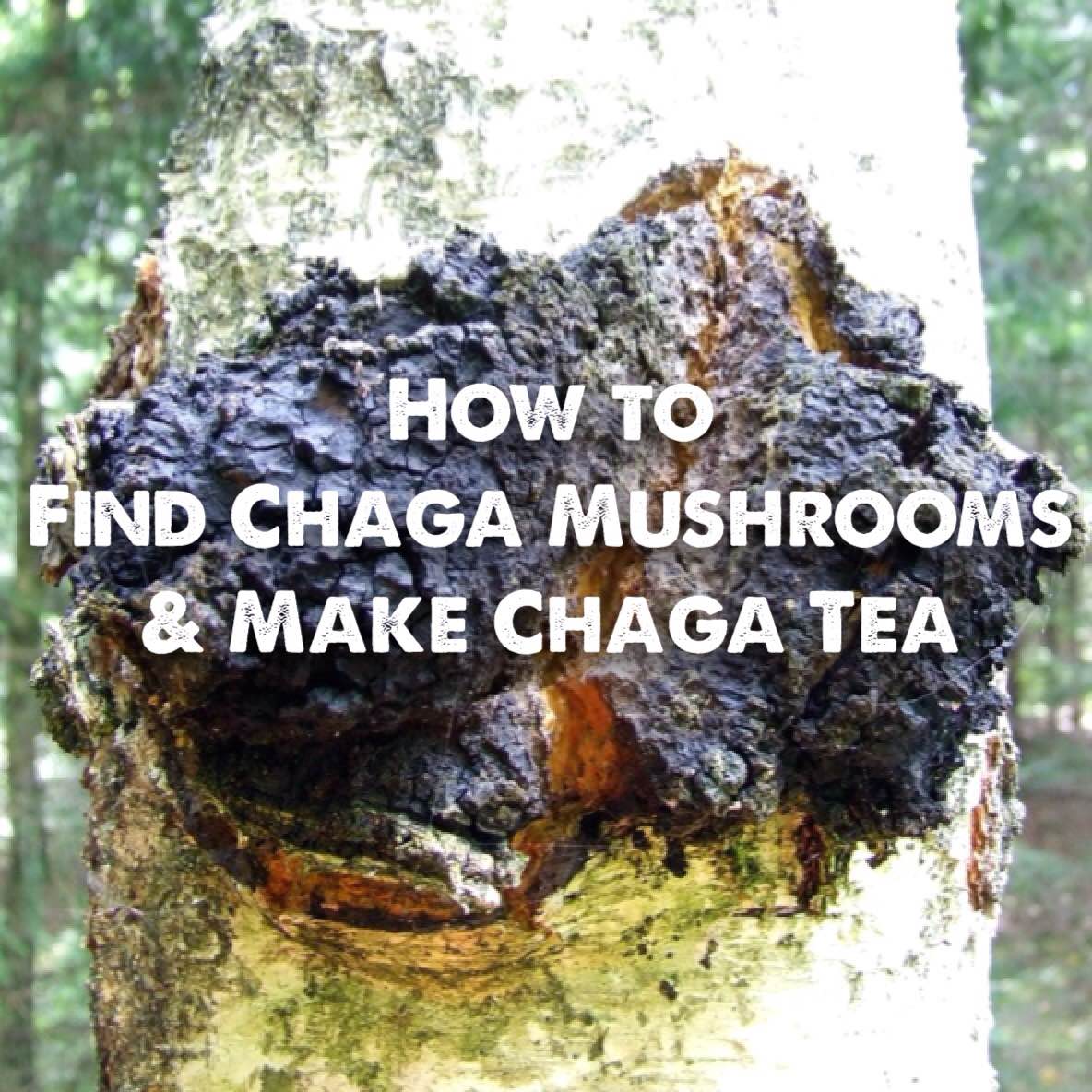This is a clip from a 2016 workshop led by Trevor Newman of Roots to Fruits, hosted by Realeyes Homestead.
Transcript:
Guy: Apples?
Trevor: Yeah. These are apples and this is a semi-dwarf called ‘Bud 118’. So again, there’s all these different names and numbers. The main difference are the size that they’re going to grow to. So I just have these stored in a bucket with some soil and if I need them I just take them out and use them for grafting. These were sent to me this spring. Again, they’re sent dormant so you get it bare root and then you put it in something immediately so you can keep it from drying out. Once you’re ready to graft, the other piece of the equation is the ‘scion wood’. These are the cuttings from the cultivar that we want to propagate and these are harvested in the winter time when the trees are dormant so basically when you prune fruit trees (generally). The other tidbit is (I guess critical information with the ‘scion wood’ it’s always first year wood. So we’re never harvesting second or third year wood. Generally, the thing on the variety, they’re about pencil diameter-ish. Then sometimes you get bigger first year wood on the more vigorous varieties. So I have a few different kinds here. We’re going to start with one called ‘Harrison’. This is a tiger apple, also can be eaten fresh. What I’m looking for is similar diameter. Ideally, you get the same diameter ‘scion wood’ as your rootstock but they don’t have to be at all. Rootstock can be anywhere from this diameter all the way up to a truck that’s 8-10 inches in diameter. scion wood is always this size but you can graft this scion wood on to a mature tree, a medium-size tree or on to a baby like this. So there’s a lot of different strategies and approaches for grafting.
Levi: Would it grow faster if it was on an older, bigger rootstock?
Trevor: Oh yeah. Yup. We’ll talk a little bit about that, too. So the technique that I’m going to show you is called a ‘whip and tongue graft’. I guess a little bit on the tools. Grafting knife. It could be any old knife, although the problem with using something like a regular Swiss army knife or something like that is they have a double bevel, generally. So it’s sharp enough in both sides. This is flat on one side and just a single bevel. The reason that they’re designed like that is something about the single bevel. It gives you a nice straight slanted cut. You don’t want– when you try and pull a double bevel knife into wood, it wants to curb and create like a little C-shaped cut. This gives you a nice straight slant and the beveled side is always facing up. So this is a right-handed knife. This knife is designed to be pulled towards you. So I’m not going like that. I’m gonna be actually pulling it towards me, which for a lot of people that seems sketchy but it’s actually really safe way to use a knife. I’ll kind of show you as I do this. So I look for a nice, smooth part of the bark. There’s this little gash here so I’m gonna cut right below that right in this zone. I’m gonna just make a slanted cut. This knife probably needs to be sharpened a little bit. So like that. Just like a straight slant. Now what we’re gonna do is we’re gonna create like a matching cut of a scion wood. This knife’s a little dull that’s why it keeps holding on to wood as I make the cut. And then what we do– this will just be called whip graft or a spiced graft if I were to tape this up and leave this like this. This is not really a very good graft because if you’re alone in the nursery it’s really hard to wrap this up because as soon as I let go it’s gonna fall. So somebody at some point in time figured out a really good technique and this is where the whip and tongue comes in. So what you do is– this is the heartwood right here in the middle which is essentially like dead wood, basically. Then this is the sap wood and then this is the cambium, this thin edge. What we’re gonna do is we’re gonna go just above the heartwood and I’m gonna actually push the knife in very gently. It’s almost like I’m actually not really pushing the knife as much as I’m pushing the wood into the knife. I’m gonna just create a little tongue. I like to use my knife as sort of a gauge. I usually go about a third to half way through the whip of the knife. Now we’re gonna do the same thing on the scion wood.
Levi: So you want to try to go parallel with the trunk?
Trevor: That’s sort of what you want to try and aim for, yeah. Another tidbits, you don’t need a big stick. Usually, we keep one to three buds and shorten that. Now, I like to wrap it up really well. So the main thing is that the cambium (that little green edge on the scion wood and on the root sac) lines up on at least one side. So you see on this side we have a really nice union. The scion wood was a little bit skinnier so it doesn’t line up perfectly there but the fact that that it’s good on one side that’s all we really need. So right here is the side where it’s lined up real nice.
Girl: Somebody came into our class and showed us how to do that with grapevine.
Trevor: Okay.
Girl: And he showed us like a giant non-movable machine. Well, you can move it but it was– because he mentioned how dangerous doing by hand is and how many people were getting hurt and stuff.
Trevor: Sounds like a wuss.
Girl: But he did like a puzzle piece. He made like a puzzle piece.
Trevor: Yeah. I’ll show you. Actually, I’ve got a tool here that I can show. And then the next thing is just
wrapping it up. This is a parafilm grafting tape. It’s non-adhesive but it’s self-fusing so it like sticks to itself. It doesn’t have any glue on it. And it’s also really stretchy. Although when it gets cold it doesn’t like to– and so there’s kind of a technique. Sort of like hold the graft and just spin it. This stuff doesn’t like the cold.
Levi: So it’s kind of like a band aid.
Trevor: Exactly. So this is like the band aid or the cast that’s holding it together, like holding it physically together. Then the last step is I put on a grafting sealant. This is a product called ‘Doc Farwell’s’. This is almost like a– it’s basically like Elmer’s glue, I think. Traditionally, people use wax like beeswax and melt it. The point of this– I’ve sacrificed an old butter knife as a grafting knife — the point of this is so that the wrap holds it together and then this seals so that the scion wood and the rootstock doesn’t dry out and also so that it doesn’t let moisture in. So it’s like a final seal. You don’t really have to put it on top of the tape but I like to just as an extra measure. Really, that’s all there is to it. Now, we would either plant this on a nursery bed and grow it out for a few seasons in a nursery bed or we plant it in a pot. Grow it out for a few seasons in a pot and then put it in its final location. You could stick this in its final home but I wouldn’t recommend it because there’s a chance that the graft won’t take so it’s better to kind of nurse it for at least a season. So the tree that the C-town red that we planted out there– I did this last spring, potted it up, grew it in a pot for that season and then we planted it. So that’s sort of the flow. So here, I’m guessing you’ll probably stick it in a nursery or something, or in pot, whatever.
Levi: I’m keeping that?
Trevor: Yeah. I’m not taking it with me.
Levi: No, I’ll stick it in a nursery in a pot. We got a sprinkler in here. Is it better to have it out in a sunny spot or I would imagine in kind of a semi-shade?
Trevor: Yeah, a semi-shade. For the first year just an area where you can really baby it. So like your nursery area is perfect, probably. And then the last thing is putting your label on. This is ‘Harrison’ so I’ll put the variety and then we’ll put the date and we’ll also put the rootstock. So ‘Bud 118’. What’s today? The 14th?
Guy: So the rootstock, was that just made from a branch?
Levi: Good question.
Trevor: So the rootstock. Just how the varieties are propagating clone-ly. The named– Any named rootstock (Bud 118, Bud-9, whatever. M-7) those are also clone. The way they clone these rootstocks is how we’re talking about the stool mounting over there so if you want to propagate a bunch of Bud 118, you’d buy one to start. You’d plant it in the ground, grow it for a year or two, cut it down, let it sucker, re-sprout and then you pile sawdust around those sprouts. Stool mounting is what that’s called. And then you generate all these clone of rootstocks. So that’s how– or that rootstock that Levi has that he was talking about planting around the site. That’s a seedling rootstock. So grow from seed. So it’s like a strain that’s grown from seed for grafting onto or you could grow it out as a tree and it produces pretty good fruit itself. So another way to generate rootstock would be find an apple that’s wild, that’s local, that’s doing really well. Collect its seeds, plant a few hundred of them and now you’re growing your own rootstock. Generally, when you plant seedlings as rootstock, you can kind of expect that they’re gonna be close to standard in size. When you’re buying clonal rootstock you can get a dwarf or semi-dwarf or whatever.
Levi: Is that semi-standard you said?
Trevor: This is semi-dwarf.
Levi: Semi-dwarf. Which is about what size mature?
Trevor: Semi-dwarf, I think they say that’s like 40% or 50%. Something like that.
Levi: So like 12 feet or 15 feet?
Trevor: Yeah. 15 feet.
Levi: Okay.
Girl: How many– like how big of a thing is grafting? I know that there aren’t that many people who can successfully graft.
Trevor: I mean there’s a lot of like in the orchard world that’s really common. The people who graft grapevines, they’re usually trying to grow (European wine grapes) and they’re just like not that hardy so they graft them onto hardier rootstock. In my opinion, that’s kind of silly. They don’t really want to grow here so I don’t try to grow– I mean you could try to grow grapes but there’s other things that grow here better. So grafting apples is really easy. Apple, I think, is the easiest. Apple, pear. Once you get into things like walnut and oak and some of the nut trees, they’re really difficult.
Girl: So it’s so much the person but the thing they’re trying to graft?
Trevor: Yeah. The species– I mean the person, too, but mainly the difficulty depends on the species. Apples are really good beginner one. I’ve had apple grafts where I like did it all rough and it’s all bumpy and I was like, ‘there’s no way this is gonna take’ and then they just grow. So it’s pretty forgiving especially with apple but I will tell a brief story about– We had a client and we did some grafting for him and he really wanted to try it so he started doing it. He gets a knife and he starts going, ‘Oh, I’m an old time whittler, guys!’ And we’re like, ‘No, no. you don’t want– This isn’t whittling. You want one cut like a smooth cut. You know, you’re not working your way at it. You want a smooth surface.’ So it’s definitely not whittling. This is a tool that makes it a little bit easier.
Levi: Don’t put your finger in there.
Trevor: This– We’ll do another one. We’ll do honey gold. So when I’m choosing a rootstock out of the bundle, generally you buy these based on caliper size so I think these were a quarter inch or something like that. I’ll kind of size them up as I’m choosing one based on the scion wood [00:14:46] that I have. So there’s a few of these tools. There’s one called the omega tool which is the most common one. I don’t really like the omega tool. They make a really short union like in length so it can break off pretty easily. My friend, Grant Schultz, he imported these and I forgot where he got these from. I think it’s just called the v-grafter [00:15:20] but he sells them on his website ‘newfarmsupply.com’. I think they’re like $100 or $200. Somewhere in that range. Really nice tool. I just got these this year and I’ve been liking it. So you basically just set this on here. There’s like a little guide like that’s where your rootstock goes. And then on the scion, we’re just creating the opposite cut.
Levi: Make sure you know which way is up on your scion wood [00:16:01].
Trevor: Buds up.
Levi: Yeah.
Trevor: I worked at this nursery, Oikos, some of you might know and there’s like a running joke there. People would call and like ask how to plant. We would always just say, ‘roots up’. You think people would know, right? So it’s literally just–
Girl: I wonder how many people would actually try planting like that.
Trevor: So that’s pretty good, pretty quick and easy. There’s definitely less room for getting hurt. It’s a safer tool for sure but I think there’s something fun about doing the– if you’re doing like hundreds of trees a day, you definitely want one of those and you can mount it on to a work bench or something. I had a friend who connected one to like a foot pedal so she could really pump them out. Now you have graft apple scion wood to apple rootstock.
Levi: Thank you. That’s the one thing I always forget to talk about.
Trevor: General rule of thumb is from apple to apple, pear to pear, peach to peach. There’s some examples to what’s called intergeneric cross-compatibility where for instance, hawthorn you can graft pear onto or quince you can graft pear onto. There’s some stone fruits that are compatible with each other but generally it’s species to species. Whenever there’s that cross-compatibility, it’s always plants within the same family. So there’s never an example of plants in two different families that are compatible with one another. In grafting, it’s actually something that happens in nature like trees will graft together, limbs will graft together if they’re rubbing against one another. Then roots also graft together, too. There’s some really cool studies they’ve done on that and forests showing how roots from trees that are close to one another will graft together and share resources and transport resources.
Levi: You can graft onto a tree branch, right?
Trevor: Yeah. We can actually do a quick demo of that on the tree over there if people want to see. It would give you a much more comprehensive understanding of grafting because this is like I’m showing you one little piece of the puzzle here. The main takeaway from this– the main principle if there’s one thing that makes grafting work, it’s cambium to cambium. So you always have to have cambium contact on the rootstock and the scion wood. Otherwise, it’s just not gonna– there’s no– they can’t–
Girl: And cambium is the green?
Trevor: It’s the green, it’s the growing tissue of the trees so you know when you look at it.
Guy: It’s kind of like the outer layer?
Trevor: Exactly. When you look at them, when you cut the tree down and look at the age of the tree each one of those rings is like the cambium for that year. So it’s where active cell division is happening. It’s where the tree is growing.
Girl: I’m gonna have to get going here soon but it was awesome coming out and seeing all this.
Levi: Thanks for coming.
Trevor: Yeah. Thanks for listening.
Girl: Thank you.
Trevor: It was nice having you.
Levi: Take care.
Guy: Now storing scion wood, when do you usually order? Do you usually take them in like February or something?
Trevor: Yeah. There are companies that sell it. Like some nurseries sell scion wood and you can buy it by the foot. And you do that like in the winter time. That’s typically when you buy it if you’re getting it from a nursery. Then you want to store it cool, moist condition so usually what I’ll do is have like a moist paper towel or newspaper, something like that, just to keep it from drying out. So this is yellow transparent–




